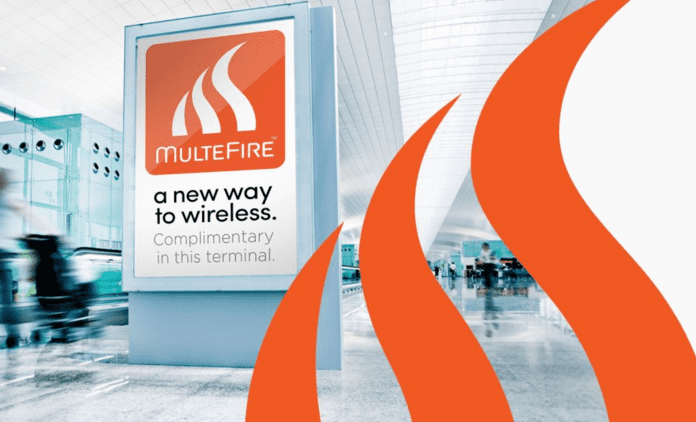The MulteFire Alliance has launched a certification program for the original 1.0 version of the MulteFire specification. A radio unit and device from Nokia are the first products to go through the process. The alliance said enterprises can now deploy their own private LTE networks for Industry 4.0 use cases in unlicensed and shared spectrum, more cost effectively than with licensed spectrum.
The MulteFire 1.0 specification defines LTE operation in unlicensed and shared spectrum bands, including the global 5 GHz band, commonly occupied by Wi-Fi traffic. The certification tests eNodeBs together with user equipment for conformance with the 1.0 specification in order to establish an interoperable device ecosystem. A newer 1.1 version has also been released, which adds support for 2.4 GHz and sub-GHz spectrum bands, as well as the 1.9 GHz band in Japan. The 1.1 version also introduces low-power wide-area (LPWA) capabilities to ape LTE-M and NB-IoT.
Curiously, the alliance, headed by big telecoms equipment and chip vendors including Nokia, rushed out a 1.9 GHz sXGP certification programme at the end of 2019, well ahead of the new 1.0 program, to ensure devices designated for the 1.9 GHz DECT band in Japan conform with its 1.1 specification. The 1.0 version supports LTE-like broadband connectivity, only, in the 5 GHz band.
German product certification company DEKRA, an alliance member, will serve as the first authorised test lab for 1.0 certification, as it did for the 1.9 certification. Its facility in Malaga is being used for 1.0 testing; a site in Yokohama is being used for Japanese certifications.
MulteFire technology opens up new industrial use cases, said the alliance. “New opportunities include rapid deployment situations such as field hospitals and emergency response, as well as temporary systems for pop-up events, touring, cultural and sports programs. In addition, it can also be used to complement existing private wireless deployments in licensed spectrum, to add capacity by tapping into available bandwidth at 5 GHz,” it said in a statement.
Through overlapping membership with 3GPP, the MFA is also supporting efforts for 5G NR standalone operation in unlicensed spectrum. A recent ABI Research white paper quantifies the total addressable market size for private network equipment – for industrial manufacturing, ports, logistics, mining, and energy – in LTE and 5G at $32.37 billion by 2030. ABI also states that by 2030 more than half of industry verticals’ private networks using LTE or 5G will be deployed in unlicensed, shared or dedicated licensed spectrum.
Mazen Chmaytelli, president of the MulteFire Alliance, said: “The MulteFire 1.0 Certification Program is a significant milestone for the alliance and represents the diligent efforts of our certification working group to bring this program to the industry. We are also excited to share that we have already certified the first MulteFire radio and device solutions from Nokia as compliant.”
He added: “By enabling private wireless connectivity in unlicensed and shared spectrum, we enable even more enterprises to deploy their own private LTE and 5G networks.”
Stephan Litjens, general manager of Nokia’s private-cellular Digital Automation Cloud (DAC) unit, and board chair for the MulteFire Alliance, commented: “As a founding member of MFA, we’re firmly at the forefront of this initiative – firstly with certification of our own MulteFire CPE offering – and also to accelerate a device ecosystem for the benefit of enterprise digital transformation.”

